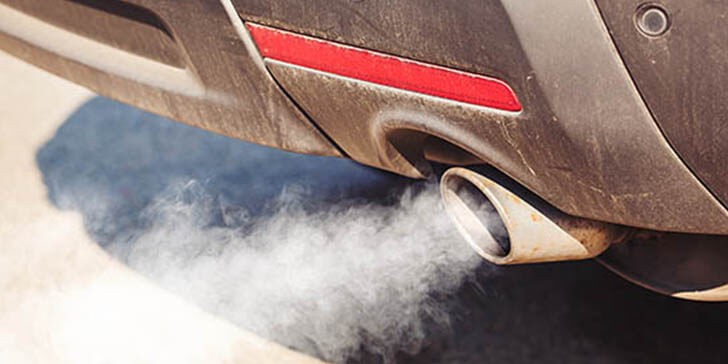The P0420 code is a common trouble code in modern vehicles, signaling “Catalyst System Efficiency Below Threshold (Bank 1)”. But what does this actually mean for your car, and how urgently do you need to address it? This guide, brought to you by the auto repair experts at obd-de.com, will break down the P0420 code, helping you understand its causes, symptoms, and potential fixes.
Understanding the Catalyst System and P0420
Modern vehicles are equipped with catalytic converters to reduce harmful emissions. These converters work by using chemical reactions to clean up exhaust gases before they are released into the atmosphere. The efficiency of this process is constantly monitored by your car’s engine control module (ECM), relying heavily on oxygen sensors (O2 sensors) placed both before and after the catalytic converter.
When your car is running efficiently, the front oxygen sensor detects fluctuations in oxygen levels as the engine cycles between rich and lean fuel mixtures. However, the rear oxygen sensor, positioned after the catalytic converter, should show a much steadier signal. This is because a properly functioning catalytic converter scrubs the exhaust, resulting in minimal oxygen level changes downstream.
The P0420 code is triggered when the ECM detects that the signals from the front and rear oxygen sensors are too similar. This similarity indicates that the catalytic converter is not working efficiently enough to clean the exhaust gases as required. In simpler terms, the rear O2 sensor is switching too much, mirroring the front sensor’s activity, suggesting the catalyst isn’t doing its job effectively.
What Causes a P0420 Code?
While the P0420 code directly points to catalyst system inefficiency, the root cause isn’t always a failed catalytic converter itself. According to a recent EPA study, a significant percentage of vehicles fail emissions tests due to catalyst inefficiency codes like P0420 and P0430. While a failing catalytic converter is a primary suspect, other factors can lead to this code:
- Failed Catalytic Converter: This is the most common culprit. The catalytic converter can become contaminated, melted, or otherwise damaged over time, reducing its ability to function.
- Faulty Oxygen Sensors: If either the front or rear oxygen sensors are malfunctioning or providing incorrect readings, it can lead to a false P0420 code.
- Exhaust Leaks: Leaks in the exhaust system, especially before the catalytic converter, can alter the readings of the oxygen sensors and trigger the code.
- Circuit Problems: Issues with the wiring or electrical circuits related to the oxygen sensors can also cause inaccurate readings and the P0420 code.
- Engine Control Module (ECM) Issues: In rare cases, a software or hardware problem within the ECM itself can lead to misdiagnosis or incorrect code triggering. Sometimes, a Technical Service Bulletin (TSB) from the manufacturer might address a known software issue and provide an ECM flash update to adjust the code’s trigger sensitivity.
 Catalytic Converters and O2 Sensors-1
Catalytic Converters and O2 Sensors-1
Symptoms of a P0420 Code
Besides the check engine light illuminating on your dashboard, you might notice other symptoms when the P0420 code is present:
- Decreased Fuel Efficiency: An inefficient catalytic converter can impact engine performance and fuel economy.
- Increased Emissions: The primary purpose of the catalytic converter is to reduce emissions. A P0420 code indicates it’s not performing this task effectively, leading to higher levels of pollutants.
- Possible Performance Issues: In some cases, you might experience slightly reduced engine power or rough running.
- Unusual Exhaust Smell: A failing catalytic converter can sometimes produce a sulfur-like or rotten egg smell from the exhaust.
Diagnosing the P0420 Code
When faced with a P0420 code, a systematic diagnostic approach is crucial. Simply replacing the catalytic converter without proper diagnosis can be costly and may not solve the underlying issue. A thorough diagnosis should include:
- Checking for Technical Service Bulletins (TSBs): Consulting TSBs from your vehicle’s manufacturer can reveal if there are known issues or ECM updates related to the P0420 code.
- Inspecting Oxygen Sensors: Testing the functionality of both front and rear oxygen sensors is essential to rule out sensor malfunction.
- Examining the Exhaust System: A careful inspection for exhaust leaks, especially upstream of the catalytic converter, is necessary.
- Catalytic Converter Testing: If other potential causes are ruled out, testing the catalytic converter’s efficiency might be required. This can involve specialized tools and procedures to measure its performance.
Conclusion
The P0420 code, signaling “Catalyst System Efficiency Below Threshold,” is a clear indicator that your vehicle’s emissions control system is not performing optimally. While often associated with a failed catalytic converter, a comprehensive diagnosis is vital to pinpoint the exact cause. By understanding the function of your catalytic converter and oxygen sensors, and by following a logical diagnostic process, you can effectively address the P0420 code and ensure your vehicle runs cleanly and efficiently. Stay tuned for our upcoming video series where we delve deeper into catalytic converter diagnostics and common failure modes like thermal damage and poisoning, offering practical tips for technicians and car owners alike.